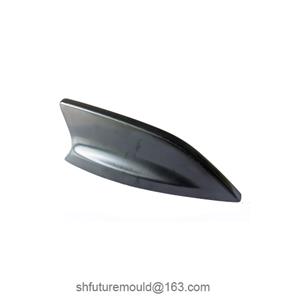Causes and Solutions for Rust Spots on Injection Molds
Rust spots on injection molds are a common issue in manufacturing, impacting both the appearance of the mold and the quality and lifespan of the products produced.
I. Causes of Rust Spots on Injection Molds
Moisture and Humidity:
Mold surfaces may come into contact with water during the injection molding process, such as leaks from the cooling system, humid air, or moisture in the raw materials.
When molds are stored in damp environments, they can easily absorb moisture from the air, leading to rust.
Corrosive Substances:
Some plastic raw materials may contain corrosive components, such as flame retardants and release agents. These substances can react with the mold surface during the high-temperature and high-pressure injection molding process, causing corrosion.
Improperly selected coolants and cleaning agents during processing can also corrode the mold.
Improper Maintenance:
If molds are not cleaned and maintained promptly after use, residual plastic, oil, and other substances can trap moisture and airborne impurities, accelerating rust formation.
Molds that are not in use for extended periods without proper rust prevention are also susceptible to rust.
Mold Material Issues:
Some low-quality mold steels have poor corrosion resistance and are prone to rust.
Improper heat treatment during mold manufacturing can also affect its corrosion resistance.
II. Solutions for Rust Spots on Injection Molds
Clean the Mold:
Use specialized mold cleaning agents and tools to thoroughly remove rust, oil, and other contaminants from the mold surface. Manual cleaning or ultrasonic cleaning equipment can be used.
For severe rust spots, use sandpaper, wire brushes, or other abrasive tools to remove the rust, but be careful not to damage the mold surface.
Rust Prevention:
Apply a rust preventive, such as rust oil or rust paint, to the cleaned mold surface to form a protective film and prevent further rust formation.
For molds that are not in use for extended periods, seal them in packaging and store them in a dry, ventilated environment.
Improve the Operating Environment:
Ensure that the humidity in the injection molding workshop is maintained at a suitable level using dehumidifiers.
Regularly inspect the cooling system to prevent leaks.
Select appropriate plastic raw materials and processing aids to minimize the impact of corrosive substances.
Strengthen Maintenance and Maintenance:
Clean and maintain molds promptly after use to remove residual plastic and oil.
Inspect molds regularly and address any issues promptly.
- Injection Mold
- Automotive Injection Mold
- Electronics & Electrical Injection Mold
- Consumer Goods Injection Mold
- Airplane Components Injection Mold
- Medical Components Injection Mold
- Irrigation Components Injection Mold
- Injection Molds




